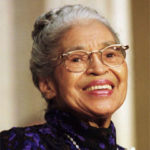By YVONNE ZIPP
Kalamazoo Gazette
KALAMAZOO, Mich. (AP) _ Five years ago, on April 1, Kalamazoo College’s then-vice president of advancement received a phone call. The man on the other end of the line identified himself as the representative of someone who wanted to make a $2 million anonymous donation to the 181-year-old college. The money would be coming in two cashier’s checks, each for $1 million.
One check was for scholarships for minority students and women. The other was an unrestricted gift.
Only after she hung up did she realize it was April Fool’s Day.
It wasn’t a prank.
And Kalamazoo College wasn’t the only one getting calls that spring. It was one of 20 U.S. schools that received anonymous donations totaling $100 million. Kalamazoo College was the smallest beneficiary and the only private school on the list. All of the chosen schools were led by women, according to the Kalamazoo Gazette ( http://bit.ly/1kN41OQ ).
“We had no idea we were part of this big group. We just thought we had this anonymous gift,” said Jeff Palmer, associate director of communications.
Michigan State University, which received $10 million, was the only other school in the state on the donor list.
What schools chose to do with their anonymous millions was the subject of a recent BBC News Magazine article. In Kalamazoo College’s case, the economic needs facing their students drove the Board of Trustees’ decision, Palmer said.
The country was being battered by the Great Recession and Michigan was one of the hardest-hit states, with unemployment soaring to more than 15 percent in 2009. In Lansing, lawmakers had just ended the state’s scholarship program, the Michigan Promise _ which many students attending college that year had been counting on.
College endowments also suffered as a result of the market crash in 2008. Kalamazoo College’s endowment tumbled from a high of about $170 million to below $100 million during the depths of the recession, Palmer said.
“That reduced the college’s ability to really help,” he said.
At the same time, Palmer said, the financial aid office was getting a lot of calls from students and families: Parents were losing their jobs and their homes to foreclosure. People spoke of trying to get by on unemployment checks.
“The timing of the gift was just remarkable,” Palmer said, adding, “It’s probably never bad timing to receive $2 million.”
A letter that accompanied the checks said the donation was given “in the hope that the gift will make a difference to your students at this difficult time.”
Out of respect for the donor’s wishes and “given the economic challenges in Michigan in 2009,” the Board of Trustees decided to use part of the unrestricted gift for scholarships, said Catherine Bonnes, director of finance, in a statement.
The financial aid office looked for current students whose families had seen a change in their ability to pay and sent out a call to students to come to them if they needed help.
Kalamazoo used the money to help more than 250 students that first year, according to Marian Stowers, director of financial aid, awarding $350,000 in scholarships. In all, up to 400 students have received grants in the five years since, most for one year but some for two years.
“I appreciate that they want to remain anonymous. I just hope that they know what a lifeline that was to many students and what a difference it meant to their futures that they were able to stay enrolled and have that burden lifted from them,” Stowers said. “We sure appreciate it.”
The Board of Trustees voted to make $500,000 of the funds available for immediate dispersal and invest the remainder to help extend the life of the scholarships. In the five years since Kalamazoo College received the gift, the school has awarded $1.04 million in scholarships to women and minorities, with another $250,000 still available, according to Bonnes. It has awarded $460,000 in scholarships for students with demonstrated financial need from the unrestricted gift. Approximately $710,000 remains from the unrestricted funds, she said.
The college established two scholarships: The Bridge Grant, which was for minorities and women, as per the donor’s stipulation; and the Difference Grant, which is open to all students, with a focus on men, Palmer said.
Reading through thank-you letters that the students wrote, it quickly becomes apparent that the money offered a lifeline to students and their families at a time when good economic news was almost nonexistent. (Names were redacted to protect students’ privacy.)
“I cannot even begin to tell you how much I appreciate your donation, it means a lot to me and my family,” one letter from a 2013 grad begins. “My dad has been out of work for almost three years and money has been very tight. Despite my offers to transfer to a cheaper school, my mom and dad have done so much to keep me at Kalamazoo College.”
Job loss, by one or in some cases both, parents, was the most common theme running through the letters, but economic hardships weren’t the only challenges they write about facing.
“My freshman year my father was diagnosed with cancer,” a 2011 Kalamazoo grad wrote in 2010. “Thankfully he has improved much since then, however he has not been able to work.”
Another 2013 grad wrote about moving from an upper-middle class existence to poverty-level after the student’s dad went to prison.
“My mom and brother stayed in a homeless shelter while I stayed in the hospital,” the student wrote.
The father of a 2011 grad wrote to express his “extreme and heartfelt gratitude” for his daughter’s scholarship. The company he worked for had laid off more than 50 percent of its staff and, while he hadn’t lost his job, he had taken a 40 percent cut in pay and benefits. His wife’s hours had been cut at her job.
That winter, they told their daughter that she would have to transfer and move back home if they couldn’t find more financial aid.
“I know it killed them to have to ask me to leave a place that we all loved so much,” his daughter wrote in her own thank-you letter.
The day the letter offering a $4,000 Bridge Grant arrived, her dad was on his third unpaid week-long furlough of the year. The good news could not have been more timely, he said.
“When things get better, and they will, my wife and I will do our best to return the generosity shown to us to help other `K’ families in their time of need,” he wrote.











